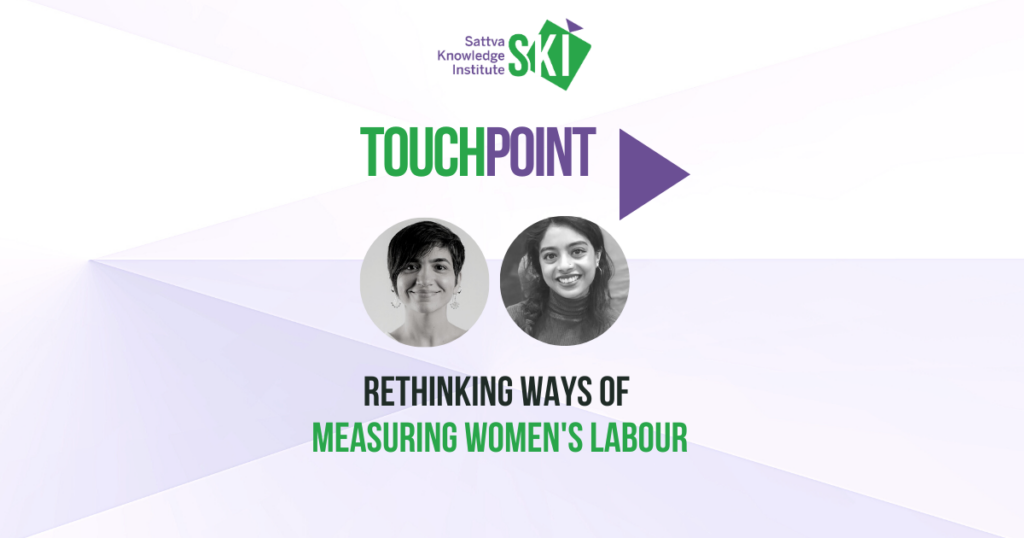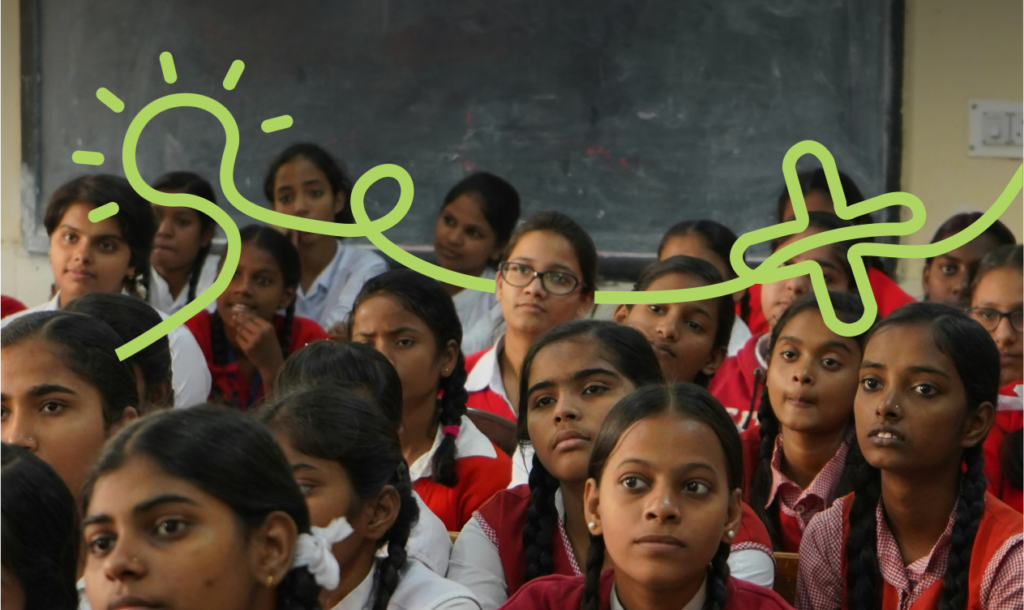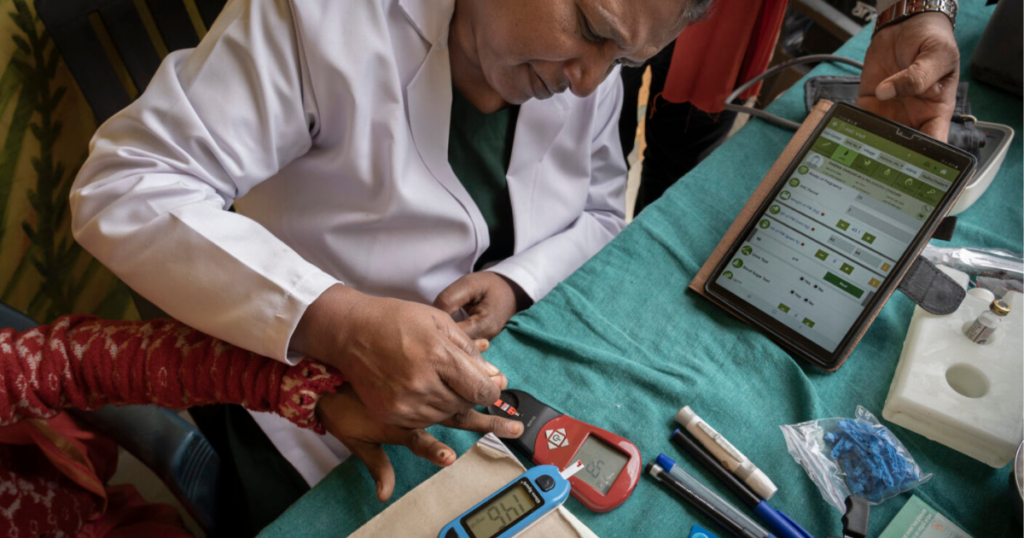The latest session in the SKI Touchpoint series was conducted by the Livelihoods Practice Area, on the topic of ‘Rethinking the ways of measuring women’s labour’.
The session was facilitated and moderated by Sattva Knowledge Institute’s Tripti Naswa (Principal and Lead, Livelihoods Practice Area), and Sadhana Sanjay (Consultant, Livelihoods Practice Area). The webinar presented insights from SKI’s perspective on Rethinking Ways of Measuring Women’s Work in India, and covered the following key insights:
- Overview of SKI’s work on women and work, and factors that impede a holistic understanding of the ways in which women work
- The principles and practices of accepted statistical tools and their shortcomings in accurately measuring women’s labour and their contributions to economy and society
- How ecosystem actors can intervene to improve the recognition and representation of women’s work in India
The session began by outlining the importance of labour market statistics and accurate national accounts. Female labour force participation rate (FLFPR) is a crucial indicator of economic progress and gender equality, but is currently plagued by the lack of understanding of how Indian women engage in work and lack of recognition of the value women’s labour can contribute to the economy. Women’s workforce participation rate is currently reported as close to 30%. However, the Economic Advisory Council recently shared a revised number of 46.2% reflecting underreporting of women’s labour and gaps in the way it is measured today. The poor understanding of women’s work, and the data deficit surrounding it are not merely considerations for statisticians and analysts from a theoretical perspective. Rather, this deficit has material consequences for actors who are working to disrupt restrictions on women’s labour and advance their autonomy and dignity in work.
While exploring this data deficit, three key shortcomings of the currently accepted methods under the United Nations System of National Accounts of measuring labour, production and labour force participation were identified. These are: the exclusion of women’s economic contribution, overreliance on market definitions of productivity, and neglect of the governing social and economic realities within which women operate.
In conclusion, women are constantly working, but their labour is not counted due to flaws in statistical principles and approaches. Their contribution to the economy as well as the social value of their labour is invisible – yet indispensable.
In order to remedy this data deficit, certain actionable outcomes for ecosystem actors were also outlined, such as:
- Improving the quality of data available by being cognisant of the contextual realities of women’s circumstances, and the full spectrum of the value women generate through their labour, and
- Building tools and frameworks to inform measurement of women’s labour, tracking:
- Women’s economic empowerment tailored to the Indian context;
- Interplays between gender equality and economic empowerment indicators, so that women’s economic well-being directly relates to their social and community empowerment as well.
If you missed the session, you can access the recording of the webinar here:




